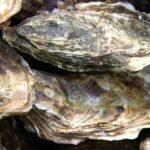Scientists reveal how prehistoric carnivores survived extreme climate change through remarkable dietary transformation
In recent study about ancient predator climate adaptation has revealed one of Earth’s most remarkable survival stories. In recent studies, scientists uncovered how a wolf-like creature called Dissacus praenuntius survived devastating global warming 56 million years ago through extraordinary ancient predator climate adaptation strategies. This prehistoric carnivore completely transformed from a meat-eating hunter into a bone-crunching scavenger, demonstrating the incredible lengths animals will go to survive environmental catastrophe.
This research isn’t just another fossil discovery – it’s a window into how modern animals might cope with today’s climate change crisis. The findings, led by Andrew Schwartz from Rutgers University, are both fascinating and honestly a bit unsettling for what they reveal about survival under extreme conditions.

Ancient Climate Adaptation During Earth’s Greatest Fever
The period scientists studied is called the Paleocene-Eocene Thermal Maximum, or PETM for short. Think of it as Earth’s most extreme fever that lasted way too long. Temperatures shot up by nearly 6 degrees Celsius in just a few thousand years – which is lightning-fast in geological time. The heat wave persisted for roughly 270,000 years. Rainfall basically disappeared in many regions, creating drought conditions.
Sound familiar? That’s because what happened back then mirrors what’s happening now. Except we’re potentially heading for something even more dramatic. This ancient climate adaptation event serves as a stark preview of environmental challenges.
The Predator’s Remarkable Climate Adaptation Strategy
Dissacus praenuntius was about the size of today’s coyotes, weighing around 12-20 kg. Despite looking like oversized wolves, these creatures were actually more related to horses and deer – which makes their climate adaptation story even more fascinating. Before the climate disaster struck, they hunted like modern cheetahs. They went after fresh meat with precision and speed.
But here’s where their ancient predator climate adaptation gets really interesting. The researchers used a technique called dental microwear texture analysis. They basically examined tiny scratches and pits on fossilized teeth under powerful microscopes. These microscopic marks tell the story of what an animal ate in it’s final days. It’s like a prehistoric dietary fingerprint that reveals adaptation strategies.
The Shocking Climate Adaptation Transformation
When the team analyzed 24 fossil molars from Wyoming’s Bighorn Basin, they expected something different. They thought these predators would stick to their original diet throughout the crisis. They couldn’t have been more wrong about this ancient predator climate adaptation.
Before the warming event, tooth wear patterns looked exactly like modern cheetahs. These were smooth surfaces that come from eating soft flesh. But during and after the PETM, everything changed dramatically. The teeth started showing complex scratching patterns that matched lions and bone-crushing hyenas instead.
This wasn’t a gradual shift either. The climate adaptation was dramatic and decisive. These animals went from being primarily meat-eaters to creatures that regularly crunched through bones. They had to extract every possible nutrient to survive.
Understanding the Ancient Predator’s Dietary Revolution
The reason behind this remarkable ancient predator climate adaptation is straightforward, though tragic. As temperatures soared, plant life crashed across the landscape. With less vegetation, herbivore populations plummeted drastically. The prey that survived became smaller and weaker than before. For a predator like Dissacus, this meant their usual hunting grounds became barren wastelands.
Faced with starvation, these animals had two stark choices: adapt or die. They chose adaptation through multiple strategies. They shrank their own body size by about 20%. They learned to extract nutrition from sources they’d previously ignored completely. Instead of relying on fresh kills, they likely became more opportunistic scavengers. They used their powerful jaws to crack open bones that other predators left behind.
Modern Lessons from Ancient Predator Climate Adaptation
This research on ancient predator climate adaptation has serious implications for today’s wildlife conservation. The study shows that animals with flexible diets have better chances of surviving rapid environmental changes. These “generalists” consistently outperform “specialists” who depend on specific food sources during climate stress.
However, there’s a sobering reality check about climate adaptation limits. Despite being incredibly adaptable, Dissacus eventually went extinct anyway. They survived for 15 million years after this dietary switch. But environmental pressures and competition finally overwhelmed them. This suggests that even the most successful climate adaptation strategies hit their limits when conditions become too intense.
For conservationists working to protect today’s wildlife, this ancient case study provides a crucial roadmap. It helps identify which species are most vulnerable to current changes. Animals that can’t adapt their feeding strategies quickly might be the first casualties of our changing climate.
The parallels between the PETM and today’s crisis are undeniable. This makes studying ancient predator climate adaptation more relevant than ever.
Reference: Study Published In ScienceDirect
RECENT POSTS
- Why We Feel Pain: The Evolutionary Purpose of Consciousness

- Ultra-Rare Genetic Disorder Diagnosed in Bengaluru: First Case in India, 12th Worldwide

- Men with Higher Testosterone Produce Body Odor Perceived as More Dominant

- How Dublin Bay’s Oyster Restoration Project Is Filtering 3.6 Million Litres Daily
















